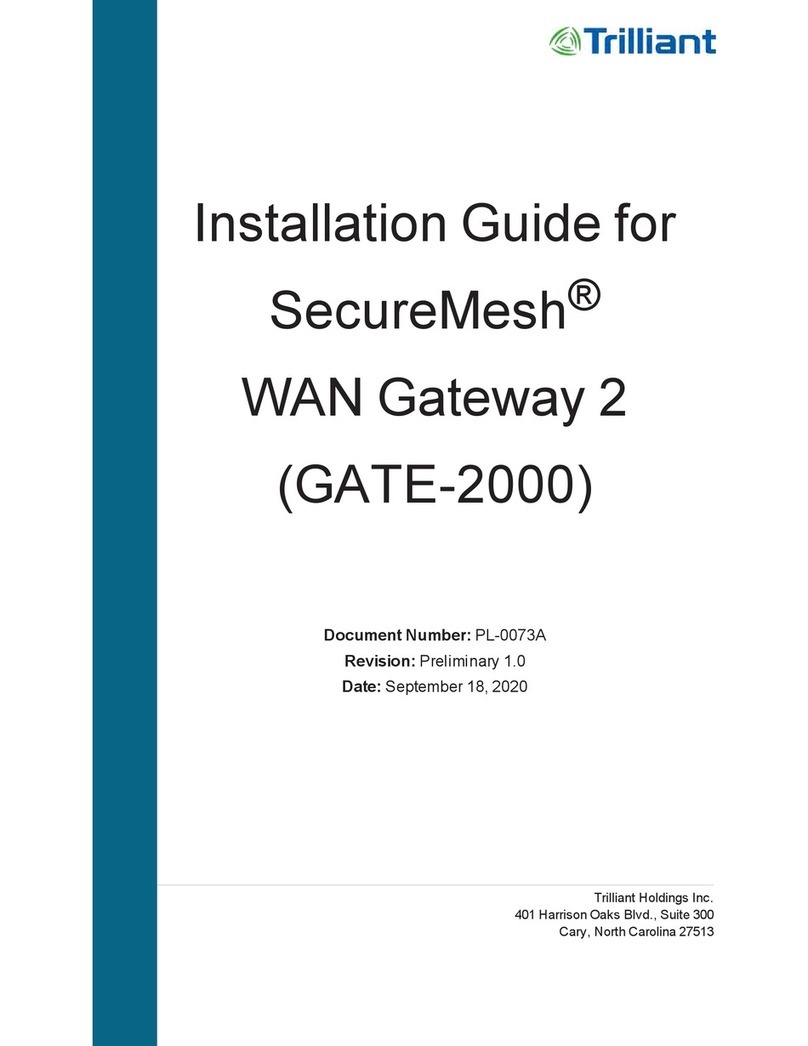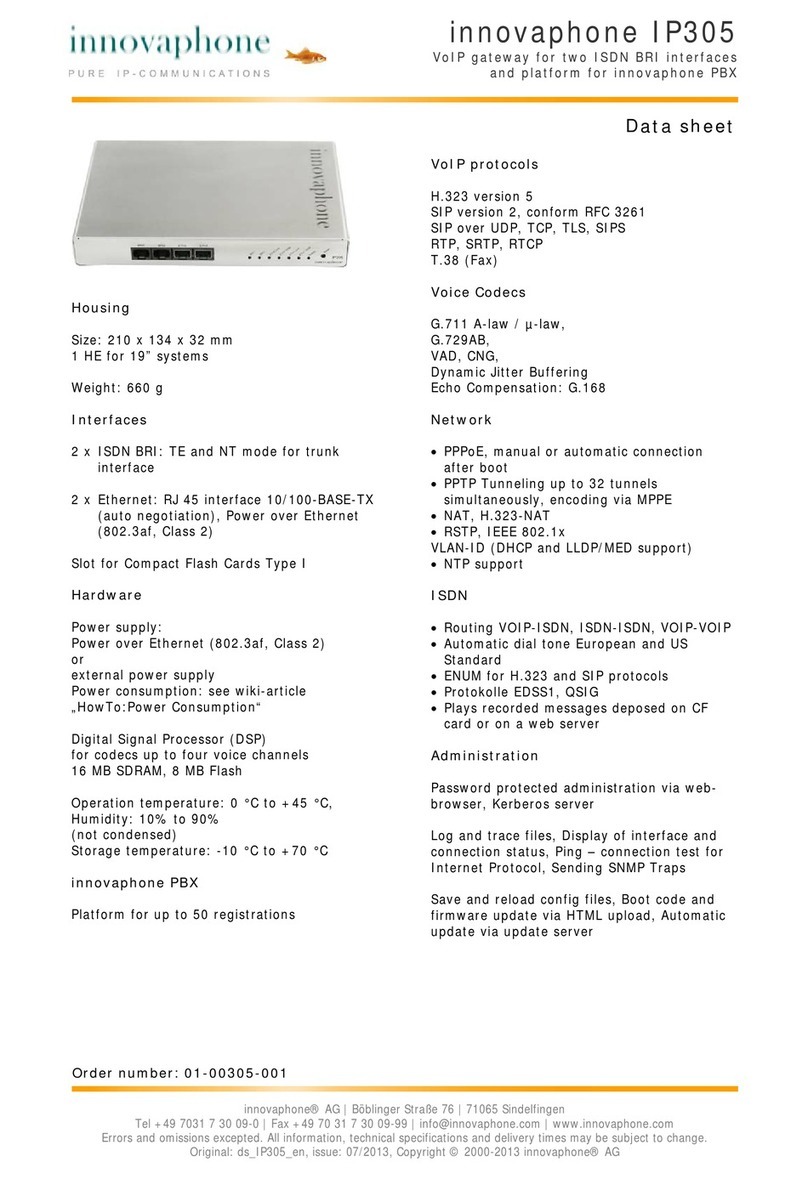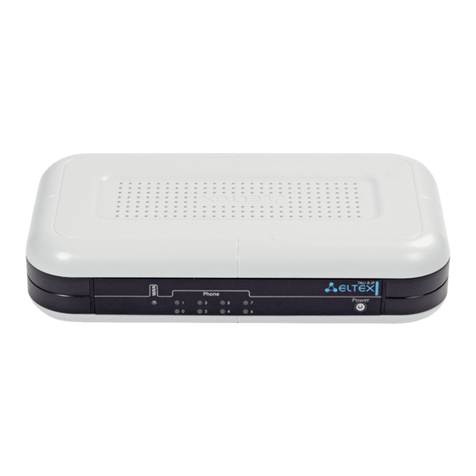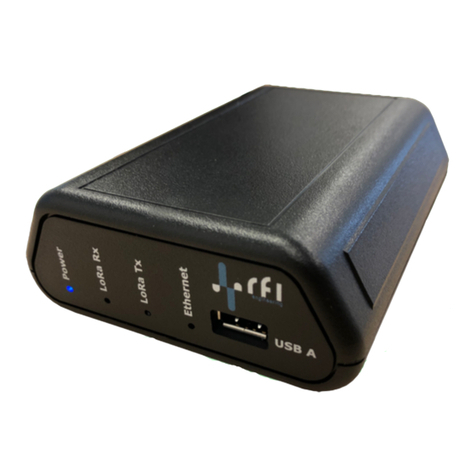Trilliant SecureMesh GATE-1000 User manual

Installation_Guide_SecureMesh_GATE-1000_110502.docx
SecureMesh™ Gateway
GATE-1000
INSTALLATION GUIDE
Contents
INTRODUCTION ............................................................................................................................................................................ 3
SECUREMESH GATEWAY COMPONENTS..........................................................................................................................................................4
ACCESSORIES .............................................................................................................................................................................................6
PREPARING FOR INSTALLATION .................................................................................................................................................... 7
REQUIRED PRE-PROVISIONING EQUIPMENT .....................................................................................................................................................7
REQUIRED OUTDOOR EQUIPMENT .................................................................................................................................................................7
INSTALLATION LOCATION..............................................................................................................................................................................7
PRE-PROVISIONING.....................................................................................................................................................................................8
INSTALLING THE GATEWAY ..........................................................................................................................................................10
UTILITY POLE INSTALLATION .......................................................................................................................................................................11
Mounting the Device .......................................................................................................................................................................11
Grounding and Protecting the Device .............................................................................................................................................12
Connecting the Device to a Source of Power...................................................................................................................................13
Completing the installation .............................................................................................................................................................14
STREETLIGHT POLE MOUNTING AND GROUNDING...........................................................................................................................................15
Mounting the Device .......................................................................................................................................................................15
Connecting the Device to a Source of Power...................................................................................................................................17
Completing the Installation.............................................................................................................................................................18
OPTIONAL WI-FI ANTENNA INSTALLATION ....................................................................................................................................................19
Attaching the Optional Wi-Fi Antennas...........................................................................................................................................19
COMMISSIONING THE GATEWAY .................................................................................................................................................20
CONFIGURING THE SECUREMESH GATEWAY ..................................................................................................................................................20
MONITORING THE POWER-ON SEQUENCE.....................................................................................................................................................20
APPENDIX....................................................................................................................................................................................21
GROUNDING GUIDELINES ...........................................................................................................................................................................21
FCC STATEMENT (US)...............................................................................................................................................................................23
INDUSTRY CANADA /INDUSTRIE CANADA (CANADA) .......................................................................................................................................23

SecureMesh
TM
Gateway Installation Guide
Trilliant Incorporated page 2 of 23
S
AFETY
I
NFORMATION
Trilliant strongly urges that you always follow all locally approved safety procedures and safety instructions
when working around high voltage lines and equipment.
The instructions in this manual are not intended as a substitute for proper training or adequate experience in
the safe operation of the equipment described. Only competent technicians who are familiar with this
equipment should install or service it. A competent technician has these qualifications:
•Is thoroughly familiar with these instructions.
•Is trained in industry-accepted high-and low-voltage safe operating practices and procedures.
•Is trained and authorized to energize, de-energize, clear, and ground power distribution equipment.
•Is trained in the care and use of protective equipment such as flash clothing, safety glasses, face
shield, hardhat, rubber gloves, hotstick, etc.
The following is important safety information. For safe installation and operation of this equipment, be sure to
read and understand all cautions and warnings.
Safety Instructions
HAZARDOUS VOLTAGE.CONTACT WITH HAZARDOUS VOLTAGE WILL CAUSE DEATH OR SEVERE
PERSONAL INJURY.FOLLOW ALL LOCALLY APPROVED SAFETY PROCEDURES WHEN WORKING AROUND
HIGH-AND LOW-VOLTAGE LINES AND EQUIPMENT.
THE SECUREMESH GATEWAY IS DESIGNED TO BE OPERATED IN ACCORDANCE WITH NORMAL SAFE
OPERATING PROCEDURES.THESE INSTRUCTIONS ARE NOT INTENDED TO SUPERSEDE OR REPLACE
EXISTING SAFETY AND OPERATING PROCEDURES.READ ALL INSTRUCTIONS BEFORE INSTALLING THE
GATEWAY.
THE SECUREMESH GATEWAY SHOULD BE INSTALLED AND SERVICED ONLY BY PERSONNEL FAMILIAR
WITH GOOD SAFETY PRACTICES IN THE HANDLING OF HIGH-VOLTAGE ELECTRICAL EQUIPMENT.

SecureMeshTM Gateway Installation Guide
Trilliant Incorporated page 3 of 23
INTRODUCTION
The SecureMesh™ Gateway is a network takeout point and root node of the SecureMesh WAN. Each
Gateway acts as a SecureMesh WAN “base station” routing all its associated SecureMesh WAN traffic to/from
the utility head end.
The Gateway uses a dynamically switched high-gain antenna array of eight separate 45° beams to
provide omni-directional coverage. Patented synchronous dynamic beam-switching technology then
coordinates use of each antenna beam to communicate with other WAN nodes.
Each SecureMesh Gateway and its associated WAN subnetwork provide an overall air data rate up to 54 Mbps
and information throughput of ~15-20 Mbps, where this capacity is dynamically shared (or explicitly allocated)
to support the network’s intended applications, such as AMI and HAN traffic backhaul, DA, video surveillance,
or, typically, a mix of these and other applications. Given the low bandwidth requirements of Neighborhood
Area Network (NAN) meters and other devices, tens of thousands of NAN nodes are generally supported by
each Gateway in addition to the 100s of WAN client devices that can be attached to its associated WAN
nodes.
Adding more Gateways to a SecureMesh WAN deployment enhances network reliability and, more importantly,
modularly increases the network’s total capacity. The overall SecureMesh WAN capacity is then defined by
the total number of Gateways times the throughput through each Gateway.

SecureMeshTM Gateway Installation Guide
Trilliant Incorporated page 4 of 23
SecureMesh Gateway Components
The following diagram shows the major components of the SecureMesh Gateway.
side view
Ethernet, 8P8C
data and power
serial, 8P8C
water intrusion gasket
status lights
optional: Wi-Fi
access point bulkhead
connector
bottom view
grounding lug
optional: Wi-Fi
access point bulkhead
connector

SecureMeshTM Gateway Installation Guide
Trilliant Incorporated page 5 of 23
The following diagram shows the SecureMesh Gateway package contents.
SecureMesh Gateway Wi-Fi antennas
(
if ordered with this o
p
tion
)
Indoor Power Supply
w/ PoE Injector
Power Cord
IEC320-C13 plug for the Americas

SecureMeshTM Gateway Installation Guide
Trilliant Incorporated page 6 of 23
Accessories
product number description
Surge Suppressor 620-00705-01 required unless provided by customer
Horizontal
Pole Mounting Bracket
620-R0007-01 for horizontal pole mounting only (e.g., streetlight cantilevers)
Vertical
Pole Mounting Bracket
DK-0029A for vertical pole mounting only (e.g., utility poles)
One of the following power supplies is required:
24V Power Service Unit PSU-1024-33 •recommended outdoor power supply and backup battery
•24V PoE connection to SecureMesh Gateway
•Standard 802.3at 48V PoE connection to client device
(without battery backup)
•33 Amp-hour backup battery (>8 hours backup at 68ºF /
20ºC)
•not needed if site location provides an Uninterruptible Power
Supply
Indoor Power Supply
w/ PoE Injector
170-R0006-01 •optional indoor power supply
•100-240 VAC, 24 VDC, 1.3A
•power cord sold separately (see below)
Streetlight
Power Supply
•optional outdoor power supply
•no battery backup capability
620-R0005-01 20-foot / 6-meter cable to photoelectric tap
620-R0005-02 3-foot / 1-meter cable to photoelectric tap
Streetlight
Installation Kit –
including Power Supply
•optional horizontal pole installation kit
•includes mounting bracket, streetlight power supply, and surge suppressor
620-00708-01 horizontal pole mount with 20-foot / 6-meter cable to
photoelectric tap
620-00708-02 horizontal pole mount with 3-foot / 1-meter cable to
photoelectric tap
Power Cord to be purchased for use with Indoor Power Supply w/ PoE Injector
171-R0005-01 IEC320-C13 plug for Americas
171-R0005-02 IEC320-C13 plug for UK
171-R0005-03 IEC320-C13 plug for Europe
171-R0005-05 IEC320-C13 plug for Australia
171-R0005-06 IEC320-C13 plug for Latin America

SecureMeshTM Gateway Installation Guide
Trilliant Incorporated page 7 of 23
PREPARING FOR INSTALLATION
Required Pre-Provisioning Equipment
The following equipment is required to support pre-provisioning of the Gateway, typically in a lab environment:
•A PC to provision the SecureMesh Gateway. Note that the Gateway’s default IP address is
192.168.0.2.
•A 24V indoor power supply with PoE injector, where this accessory is included in the Gateway package
contents.
•Two CAT5e Ethernet cables. One Ethernet cable must be a cross-over cable to connect the Gateway’s
data and power Ethernet port (or the attached surge protector) to the 24V PoE power injector; the other
Ethernet cable must be a straight-through cable to connect the PoE power injector to the PC.
Required Outdoor Equipment
The following equipment is required to support field installation of the Gateway:
•The PSU-1024-33 SecureMesh Power Service Unit is recommended unless an Uninterruptible Power
Supply is available at the installation site.
•A CAT5e, UV-protected, Shielded-Twisted Pair (STP) Ethernet cable with ground wire for connecting
the Gateway’s Surge Protector to the PoE power supply. If the PoE power supply is the PSU-1024-33
24V Power Service Unit, any type of Ethernet cable can be used; otherwise, a cross-over cable must
be used.
•A surge suppressor, either the unit identified on the accessory list above (Trilliant part number 620-
00705-01) or an equivalent unit.
•One of the accessory mounting brackets listed above or a similar mounting bracket providing a vertical
pole with a 1.25” to 2” diameter that is a minimum of 18” from any structure to the side of the Gateway.
The vertical pole must extend a minimum of 5” above the horizontal surface of the bracket.
•A 10 AWG (or larger) ground wire of sufficient length to connect the Gateway to the primary grounding
point of the utility structure to which the Gateway will be mounted.
•A magnetic level to ensure the Gateway is plumb.
•Self-fusing rubber insulation and sealing tape such as Scotch®130C or 2228 Rubber Mastic Tape
Installation Location
In general, a SecureMesh Gateway should be installed in a location that will not obstruct the radio signals to
and from the Gateway. The SecureMesh Gateway should be installed in a location that meets all of the
following guidelines:
•Installation and wiring of the SecureMesh Gateway must conform to all local electrical codes and
ordinances.
•The installation location must be either owned by the utility or the utility must have access rights to the
location.

SecureMeshTM Gateway Installation Guide
Trilliant Incorporated page 8 of 23
•The installation location must be able to provide adequate power. Note that the 24V Power Service
Unit requires 90-265 VAC 50/60 Hz power.
•The Gateway enclosure must be mounted at least 18 feet (5.5 meters) above ground level, although
radio performance and coverage will generally improve as the mounting height is increased.
•The installation location must not obstruct radio communications. For example:
— The mounting structure should not block radio coverage or be adjacent to structures that block
radio coverage).
— The installation location must be clear of thick trees or brush growth upon installation and in the
foreseeable future. Foliage in the line of sight with other communicating devices can
detrimentally affect radio performance.
— The Gateway should have an unobstructed view of the sky overhead. The Gateway relies upon
GPS (Global Positioning System) signals to establish time synchronization, and the strongest
GPS signals are available if the device has an unobstructed view of the sky. Upon startup, the
Gateway searches for a GPS signal. If the device cannot detect a signal, it will be unable to
complete startup and will not establish wireless connections with other SecureMesh WAN
devices.
•As necessary, adequate space must be available to use a bucket truck.
•The installation location must not impede normal maintenance activities (for example, access to the
Gateway’s associated Power Service Unit to replace the battery).
•If choosing a streetlight pole installation, make sure the streetlight is providing constant power.
Pre-Provisioning
In general, each Gateway is shipped from the factory with basic
configuration items already written into non-volatile memory. However,
certain information must still be configured prior to installation.
Provide power to the Gateway as shown in the picture to the right, and then
configure the following parameters.
To configure the Gateway’s parameters, connect the Gateway to a PC,
establish a Telnet session to IP address 192.168.0.2, and invoke the
command line interpreter. Please refer to the “SecureMesh™ WAN
Command-Line Interface” (Trilliant document number DP-0985) for complete
information.
The following Gateway parameter must be configured:
Shared network key (“netkey”) — the shared network key is used by a SecureMesh WAN node to
prove (via an authentication handshake) that the node belongs to a particular network or operator; i.e.,
the shared network key is used to authenticate the SecureMesh WAN node to the SecureMesh WAN
and, reciprocally, authenticate the SecureMesh WAN to the SecureMesh WAN node. The netkey is a
string of 6 to 64 ASCII letters, numbers, or symbols.
Ethernet port
Ethernet cable
cross-over
Ethernet cable
straight through
power
su
pp
l
y
power
in
j
ecto
r

SecureMeshTM Gateway Installation Guide
Trilliant Incorporated page 9 of 23
primary frequency – the primary frequency of the Gateway is center frequency to which the
Extenders, Extender Bridges, and Connectors are expected to connect. Specify the primary frequency
in MHz as a four digit number (e.g. 5745).
If IPsec VPNs are being used (note that Trilliant strongly recommends their use), the following Gateway
parameter must also be configured:
VPN credentials — the VPN shared secret allows a SecureMesh WAN management tunnel to be
established to the VPN router (note that in automatic provisioning mode, node configuration is provided
in a secure manner over the IPsec VPN tunnel, requiring the VPN credentials in order to establish the
tunnel and thus necessitating that they be configured before deployment). Because a SecureMesh
WAN node’s IP address may be dynamic (for instance, a node may connect to different IP subnets
through different SecureMesh WAN Gateways), a VPN router will be unable to differentiate between
different VPN clients, and the SecureMesh WAN nodes in a network must all employ the same VPN
shared secret. The VPN shared secret is any ACSII string up to 64 bytes in length, using any
combination of letters, numbers, or symbols.

SecureMeshTM Gateway Installation Guide
Trilliant Incorporated page 10 of 23
INSTALLING THE GATEWAY
Physically installing the SecureMesh Gateway involves:
•Mounting the device
•Grounding and protecting the device
•Connecting to a source of power
•Completing the installation
•Optionally: Attaching the Wi-Fi antennas
Installation of the Gateway on either a utility pole or streetlight is discussed in the following subsections.

SecureMeshTM Gateway Installation Guide
Trilliant Incorporated page 11 of 23
Utility Pole Installation
To install a Gateway on a utility pole, observe the following procedures:
Mounting the Device
Mount the Bracket
•The DK-0029A vertical pole mounting bracket has an
extension arm and a mounting pole as shown on the
right.
•Mount the equipment extension arm to the utility pole
using bolts or bands.
•Attach a steel mounting pole through the end of the
extension arm using the 5/8” attached bolt on the bottom
of the pole mount. Firmly tighten.
Attach The Gateway to the Bracket
Use the provided mounting bracket and appropriate length
¼“diameter screws that are provided in the accessory kit to
attach the SecureMesh Gateway to the mounting pole (see
the figure on the right).
Note that screws 1" in length can accommodate a pole
diameter up to 1½" while screws 2" in length accommodate a
pole diameter of 2-1/8”.
The screws should be tightened to 20 foot-pounds (27
Newton-meters) of torque.
equipment
extension arm
utilit
y
p
ole
mounting pole

SecureMeshTM Gateway Installation Guide
Trilliant Incorporated page 12 of 23
Grounding and Protecting the Device
The surge protector box should be attached to the
bottom of the Gateway. The surge protector will be
attached using the ground screw as a pivot point then
the box will be swung into place against a mounting
bracket screw.
•Remove the ground screw from the base of the
device, and then loosen (but do not remove) the
screw on the same side of the bracket as the
ground screw
•Run the ground screw through the lug of the green
ground wire coming from the surge protector and
the hole in the surge protector bracket.
•Before tightening the ground screw, remove a
section of the insulation on the ground wire which
will attach to the ground point on the mounting
structure and wrap this section around the ground
screw.
•Pivot the box into place such that the other end of
the surge protector’s mounting bracket touches the
loosened screw. Tighten both screws.
•Be sure to connect the ground wire to the
grounding point on the mounting structure.
•Run the CAT5e cable under the gasket and plug it
into the Ethernet port in the cavity on the device
base (see the diagram to the right)
.
CAT5e
Ethernet Cable
8P8C Ethernet
Port
8P8C serial
port
View of underside with cover plate removed
ground wire
ground wire to
mounting
structure
ground screw

SecureMeshTM Gateway Installation Guide
Trilliant Incorporated page 13 of 23
Connecting the Device to a Source of Power
The Power Service Unit can be used to provide PoE power and battery backup for the Gateway. Please refer
to the Power Service Unit Installation Guide for more information (Trilliant document PL-0042A, Installation
Guide, SecureMesh 24V PSU). Alternatively, the site may have its own Uninterruptible Power System that can
be used along with a PoE injector to provide 24V power and data over an Ethernet cable; terminating in an
8P8C connector as per TIA/EIA-568-B.
Connect the Power over Ethernet (PoE) injector to the Surge Protector
Both power and data are provided over the Ethernet cable connection to the Gateway.
Always use CAT5e (outdoor CAT5) cable that is shielded (Shielded Twisted Pair – STP), UV protected, with a
drain-wire. The Gateway has an auto-sensing Ethernet port and therefore, either a straight through or a cross-
connect cable may be used.
The cable seal gasket (glands) is water-tight and will not allow terminated cables to be passed through. The
cable will have to be re-terminated. Therefore, it may be best to perform the termination on the ground before
beginning the installation.
A sufficient portion of the cable shielding must be available to be connected to the ground bolt.
•Run an un-terminated CAT5e cable through the open glands on the surge protector.
•Strip the protective coating from the outside of the CAT5e cable to a sufficient length that the shield of the
cable may be connected to the ground lug of the surge protector and the twisted pairs may be connected
to the RJ45 or the connector block. Connect the cable shield (drain wire) to the internal ground lug.
•Either terminate the cable from the PoE using an RJ45 connector or terminate all eight cables to the
terminator block. The screw down terminator block is removable from the base board of the surge
protector to ease connections. Please note that the pin-outs of the RJ45 are standard TIA/EIA-568-B. The
screw down terminal block wiring diagram is listed on the main board.
drain wire
crimp lug
grounding connection
inside surge protector
ground bolt
unprotected
CAT5e
Ethernet cable
from PoE power
source
watertight glands
PoE cable ↓
protected CAT5e
Ethernet cable provides PoE
power to Gateway

SecureMeshTM Gateway Installation Guide
Trilliant Incorporated page 14 of 23
Completing the installation
•Check the connections and close the device
Check to ensure all connections and grounding are
proper, and replace the surge protector’s cover and the
Ethernet connection cover on the base of the Gateway.
These screws should be tightened to 15 foot-pounds
(20 Newton-meters) of torque.
•Secure the Cabling
Use sturdy cable ties or Velcro wraps (not included) to
secure all the cabling against strain, especially if the
installation is subject to high winds.
sturdy cable ties or
Velcro wraps

SecureMeshTM Gateway Installation Guide
Trilliant Incorporated page 15 of 23
Streetlight Pole Mounting and Grounding
To install a Gateway on a streetlight, observe the following procedures:
Mounting the Device
Mount the Bracket
•Chose one of the two available Streetlight Installation
Kits from the Gateway accessory list. The kits vary only
in the length of the cable to attach to the streetlight
photo cell.
•If the clamp is not already separate from the main
bracket, remove the nuts from the bolts and separate
the clamp from the main bracket.
•Place the main bracket over the light pole’s horizontal
extension arm. Place the clamp on the bolts and
secure with the nuts provided as shown on the right.
Hand tighten the nuts.
•Make the mounting pipe plumb (straight) by moving the
main bracket from side to side and moving the plumb
adjustment bracket forward and backward. The
accuracy should be checked using a magnetic level.
When the mounting pipe is plumb, tighten all nuts.
p
hoto cell ta
p
A
C in
p
ut
excess wire storage
clamp
Ethernet
PoE cable
power supply and
surge protection
plumb adjustment bracket
main bracket
mounting pipe
plumb adjustment screw

SecureMeshTM Gateway Installation Guide
Trilliant Incorporated page 16 of 23
Attach The Gateway to the Bracket
Use the provided mounting bracket and appropriate length
¼“diameter screws that are provided in the accessory kit to
attach the SecureMesh Gateway to the mounting pole (see
the figure on the right).
Before tightening, rotate the device to ensure there is ample
room for the omnidirectional antennas to clear the mount
stand and streetlight pole.
Attach the Ground Wire
•Connect the Ethernet PoE cable to the Ethernet port at
the base of the Gateway, pushing the 8P8C into the
socket on the bottom of the Gateway until it locks into
place (as shown on the right). The Ethernet PoE cable
should be routed through the water protection gasket.
•Loosen the ground screw at the base of the Gateway.
Remove a section of the insulation on the ground wire
that will attach to the ground point on the streetlight, and
wrap this section around the ground screw and tighten the
screw.
•If the streetlight is completely metal, attach the other end
of the ground wire to the mounting hardware. If the
streetlight is a metal arm attached to a wooden pole the
ground wire must extend to a proper ground location.
Ethernet PoE cable
ground
wire
8P8C Ethernet
socket
8P8C
serial port
View of underside with cover plate removed
water intrusion
gasket

SecureMeshTM Gateway Installation Guide
Trilliant Incorporated page 17 of 23
Connecting the Device to a Source of Power
The Streetlight Installation Kit is to be used with constantly powered streetlights that use standard photocell
adapters. The Streetlight Installation Kit is complete with an A/C to D/C power supply that also provides surge
protection.
Connect to Streetlight AC Power
•Locate the photocell on the light pole (usually located
on top of the street lamp) and remove it; twisting it
counter-clockwise and lifting it from the socket.
•Connect the photocell adapter (power tap) to the
photocell socket; twisting clockwise until hand tight.
•Replace the photocell on top of the photocell
adapter; twisting clockwise until hand tight.
•Coil any excess cable. Place it in the space provided
under the mount stand and secure it.
photocell
photocell adapter /
power tap

SecureMeshTM Gateway Installation Guide
Trilliant Incorporated page 18 of 23
Completing the Installation
•Check the connections and close the device
Check to ensure all connections and grounding are
proper and replace the surge protection box cover and
the Ethernet cover to the base of the Gateway. These
screws should be tightened to 15 foot-pounds (20
Newton-meters) of torque.
•Secure the Cabling
Use sturdy cable ties or Velcro wraps (not included) to
secure all the cabling against strain, especially if the
installation is subject to high winds.
sturdy cable ties or
Velcro wraps

SecureMeshTM Gateway Installation Guide
Trilliant Incorporated page 19 of 23
Optional Wi-Fi Antenna Installation
If the Gateway has an optional Wi-Fi radio, observe the following procedures:
Attaching the Optional Wi-Fi Antennas
•Attach both 2.4 GHz Wi-Fi antenna to the N-type
female connectors as shown in to the right.
•Hand tighten or, equivalently, tighten the antennas
using a torque-limiting tool tighten it to 14 inch-pounds
(1.5 Newton-meters), where 14 inch-pounds is
approximately the torque a person can achieve using
one hand.
•Use self-fusing rubber insulation and sealing tape to
wrap the antenna bulkhead connector and the
antennas to avoid water penetration of any kind.

SecureMeshTM Gateway Installation Guide
Trilliant Incorporated page 20 of 23
COMMISSIONING THE GATEWAY
Configuring the SecureMesh Gateway
Assuming the Gateway is properly pre-provisioned, use of automatic provisioning as described in the “Trilliant
Network Element Management System (NEMS) Administration Guide” (Trilliant document number TLT-CS-
ADM-94) recommended.
Monitoring the Power-On Sequence
When power is supplied to the SecureMesh Gateway, it starts a
power-on sequence that can be monitored by observing the pair
of LED lights on the underside of the device.
The SecureMesh Gateway must have access to a GPS signal to
complete its power-on sequence and start making wireless
network connections. The power-on sequence takes up to 15
minutes, depending on how quickly the device can acquire a
GPS signal.
The tables that follow provide detailed descriptions of device
states indicated by the LED lights. When both LED lights are
illuminated and steady, the Gateway has successfully
connected to the wireless network.
Device State Link LED (Green) Activity LED (Amber)
startup in progress slow staggered blinking of both LEDs
startup failure off on
initializing processor (and acquiring GPS
signal) blinks 4 times; repeats cycle blinks 4 times; repeats cycle
initialization failure fast, synchronized blinking of both LEDs
successful initialization, but failure to
locate hello on off
successful initialization; heard hello off blinking based upon RSSI signal
level
successful initialization; link is not
optimized, or is in pre-authorization slow blink blinking based upon RSSI signal
level
successful initialization; link is in standby
state on RSSI fast blink blinking based upon RSSI signal
level
WAN connected – NAN radio operational on on
WAN connected – NAN radio not
operational on blinks 4 times; repeats cycle
Link LED (Green)
A
ctivity LED (Amber)
Table of contents
Other Trilliant Gateway manuals
Popular Gateway manuals by other brands
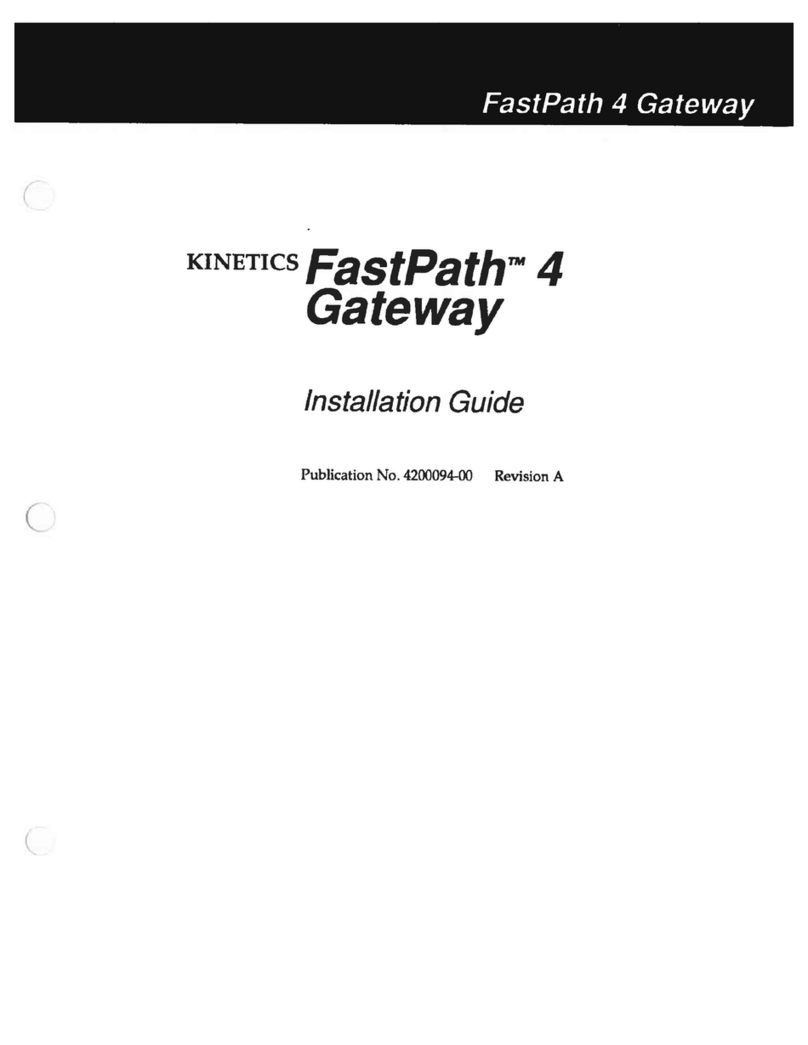
KINETICS
KINETICS FastPath 4 installation guide
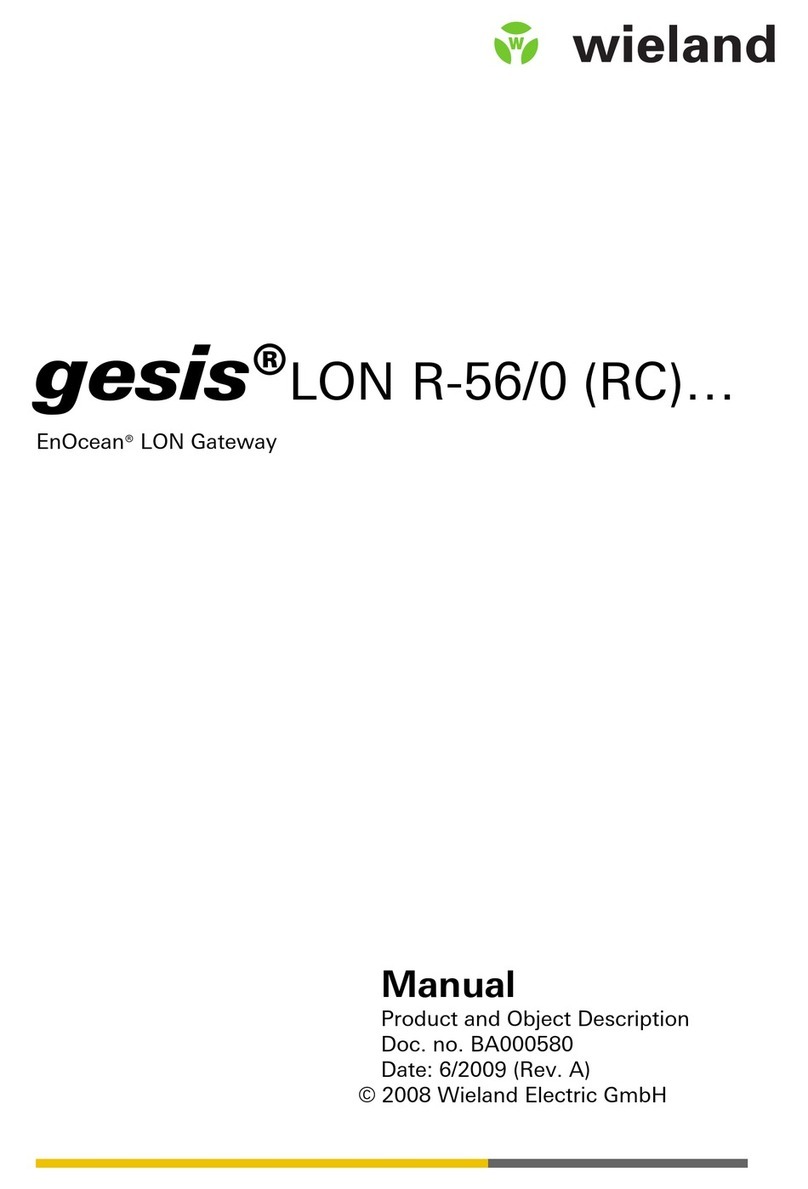
Wieland
Wieland gesis LON R-56/0 (RC) manual
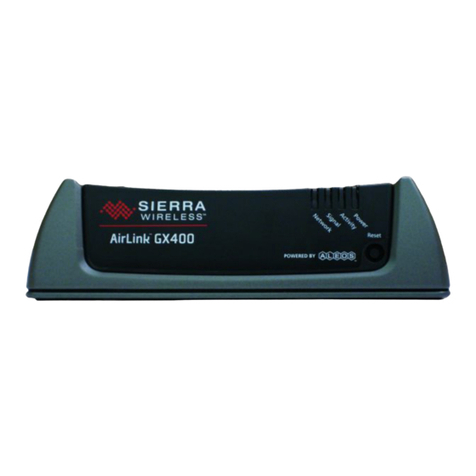
Sierra Wireless
Sierra Wireless AirLink GX400 user guide

Gempro Technology
Gempro Technology GP-710 user manual

Saswell
Saswell SASWG-01-RF-WIFI user manual
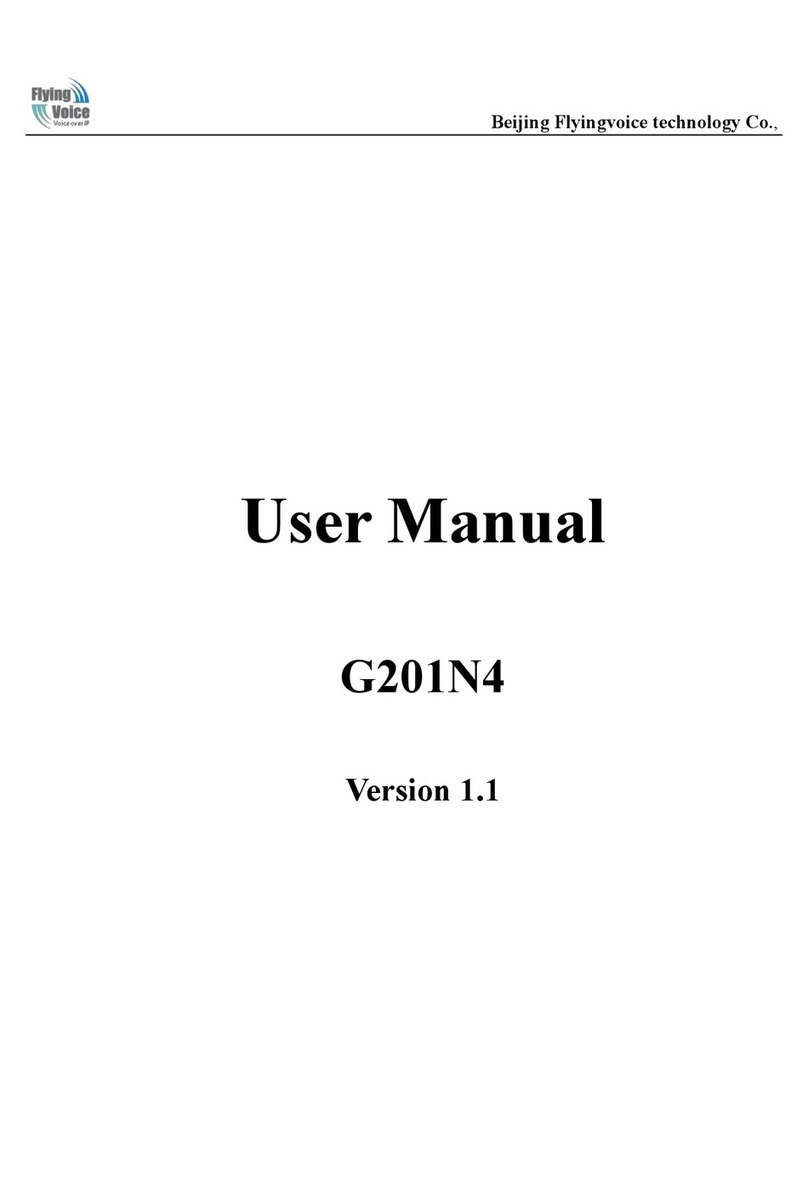
Flying Voice Technology
Flying Voice Technology G201N4 user manual
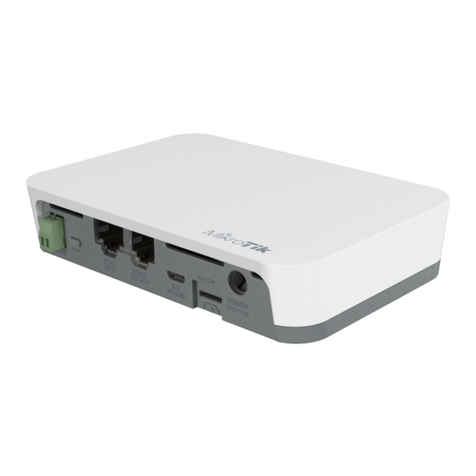
MikroTik
MikroTik RB924i-2nD-BT5&BG77 quick guide
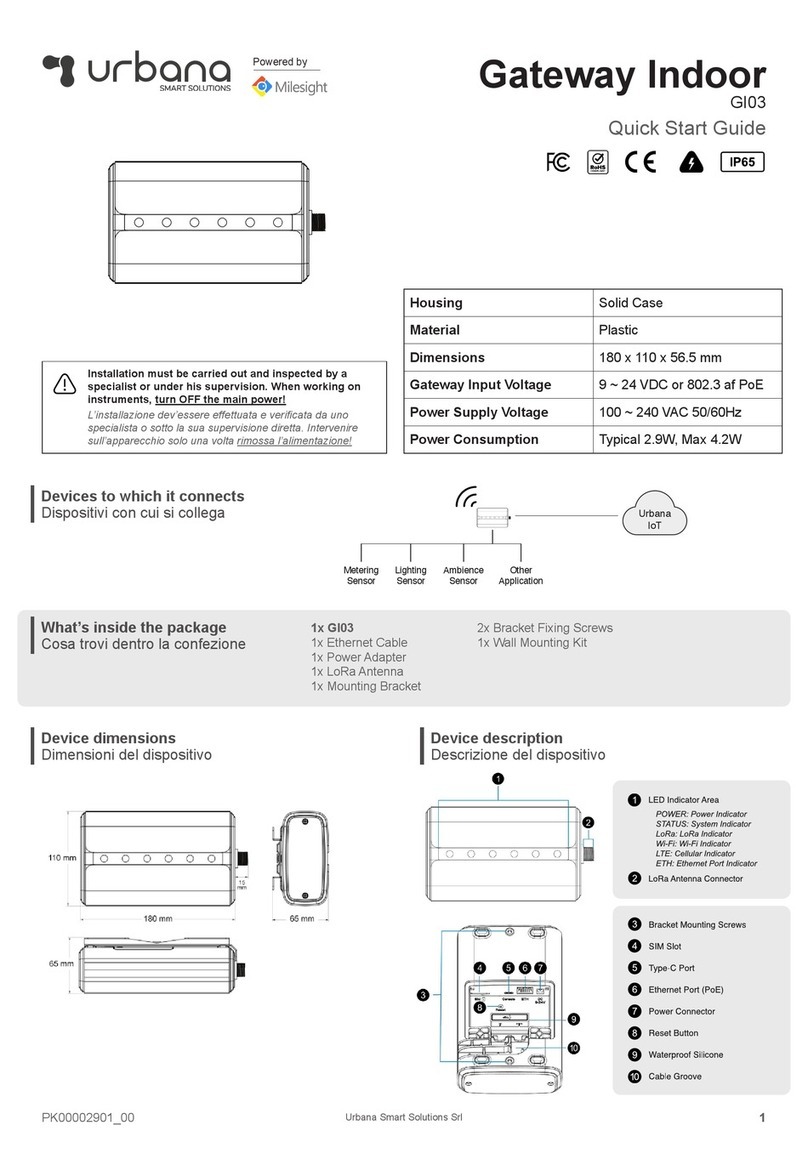
Milesight
Milesight Urbana GI03 quick start guide
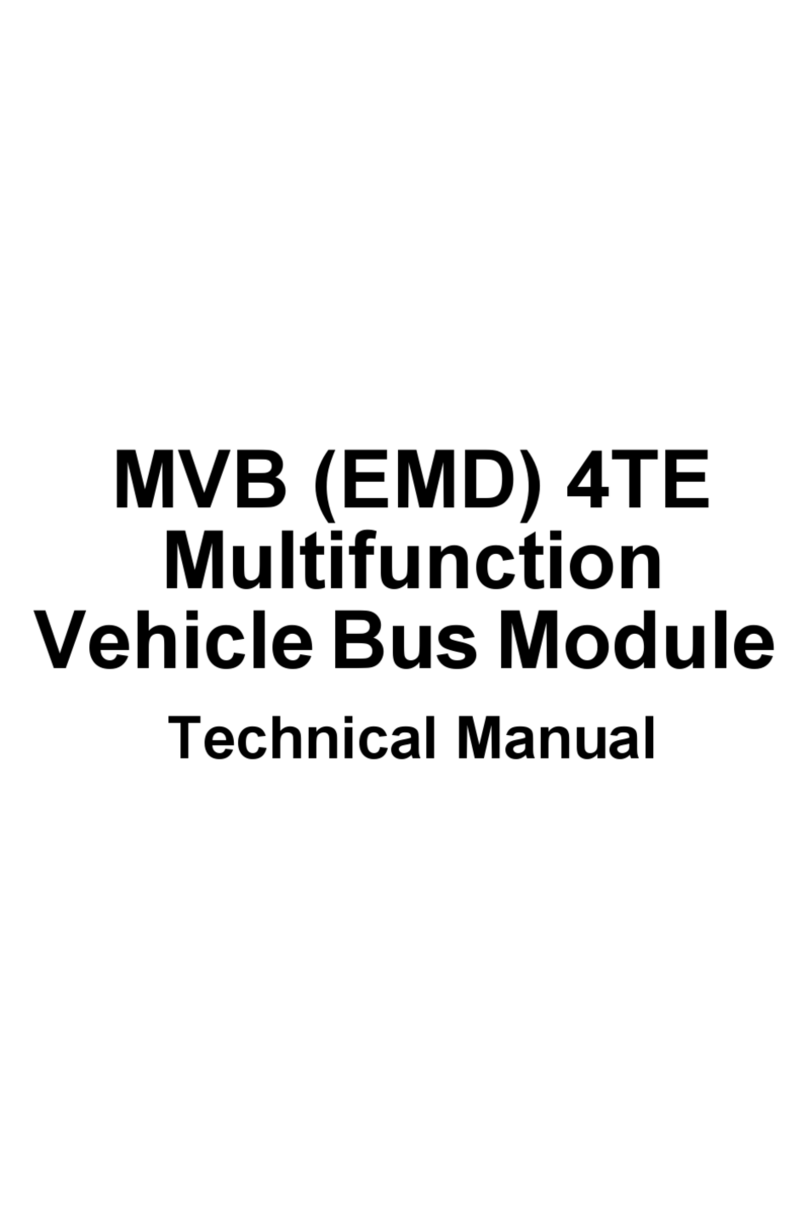
EKE-Electronics
EKE-Electronics EKE-Trainnet MVB Technical manual
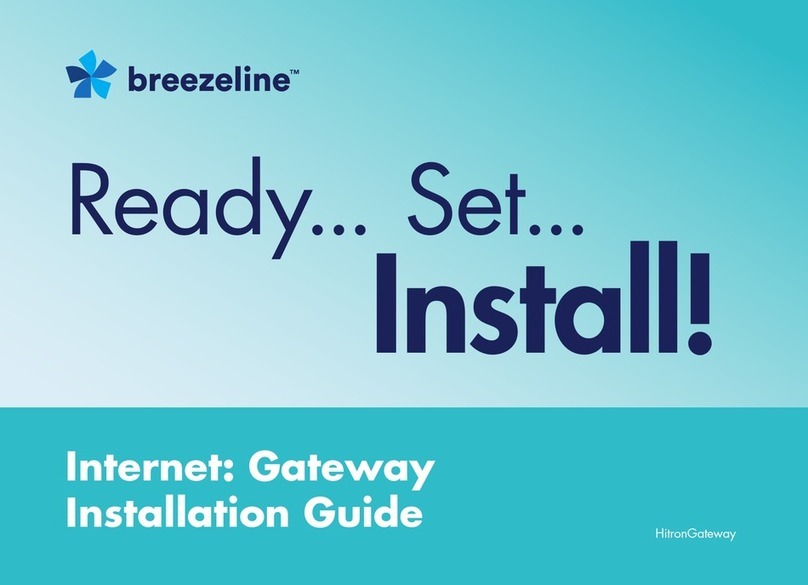
Breezeline
Breezeline HitronGateway installation guide

Dell
Dell EGW-3200 user guide
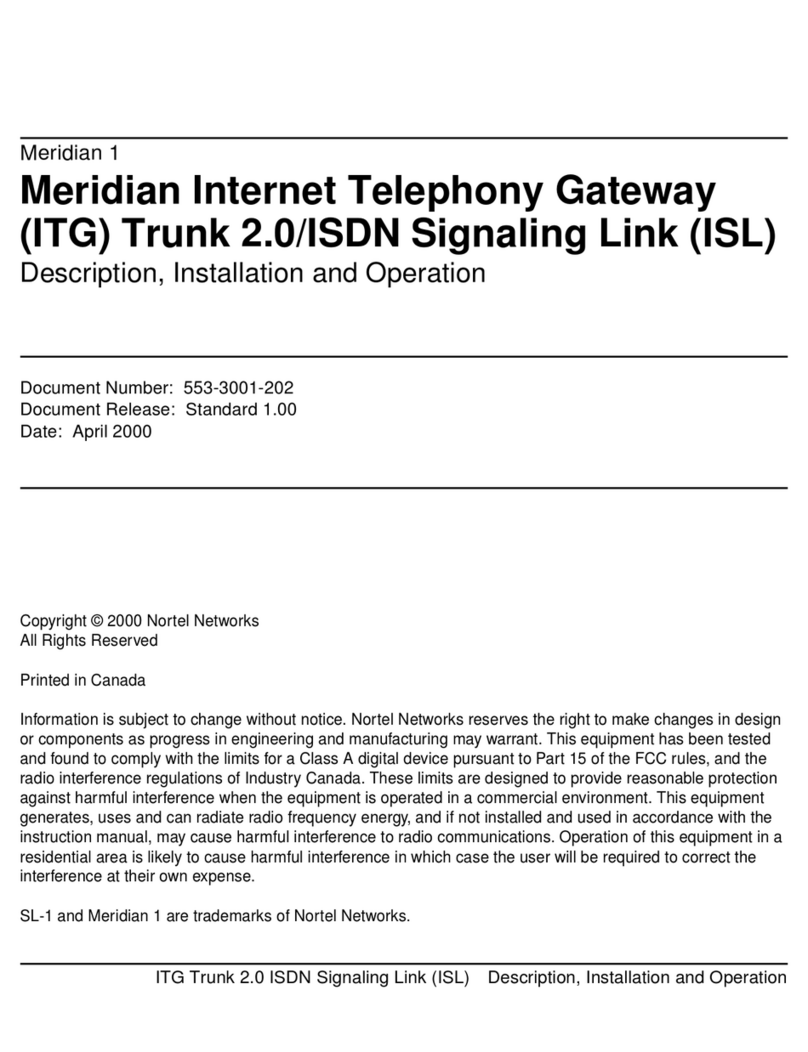
Nortel
Nortel ISDN Signaling Link Description, Installation and Operation
